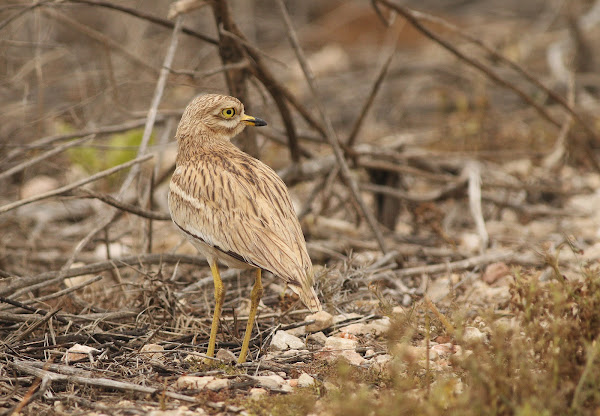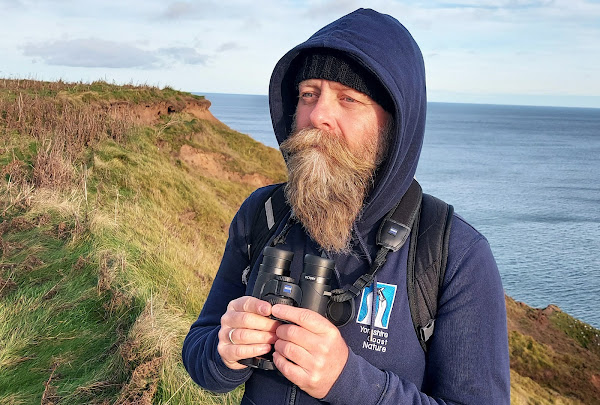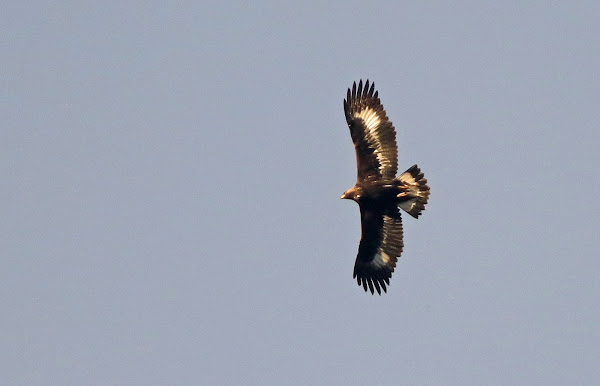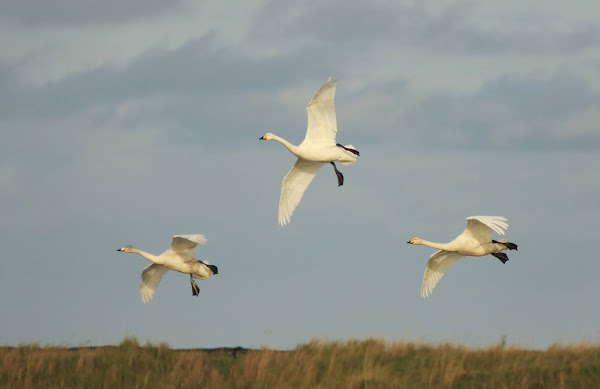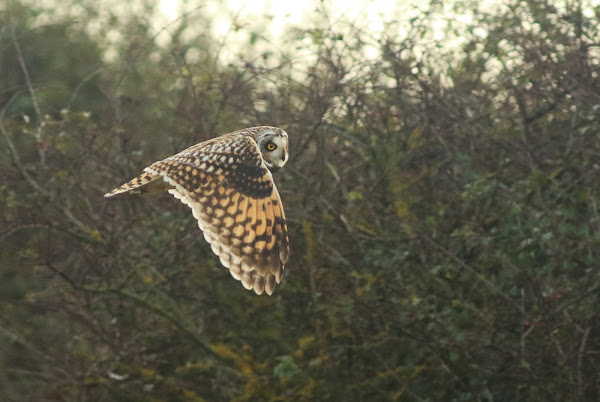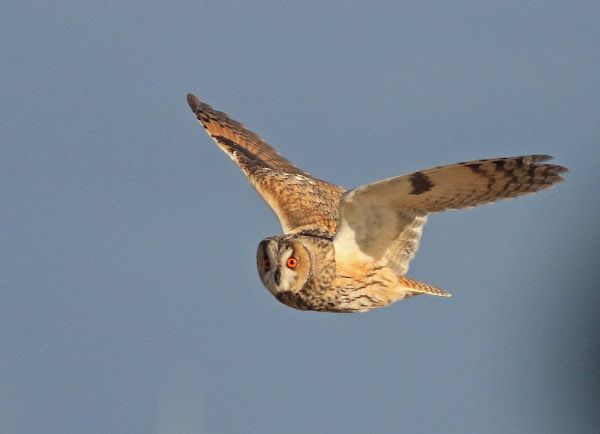As with diurnal migration, the species dynamic naturally changes as October goes on, with fewer possibilites increasingly confined to a hardier, more 'northern' suite of species; Oct '21 was inkeeping in this respect, with the later-arriving shorebirds, thrushes, a limited range of wildfowl (including regular, big numbers of Pink-feet and a few flocks of Whoopers); there were few truly notable nights, however, with e.g. 321 Redwings on 11th one of only a handful of good counts for this species.
Tuesday, January 25, 2022
2021- The Year In Nocmig: Filey (Part Two)
As with diurnal migration, the species dynamic naturally changes as October goes on, with fewer possibilites increasingly confined to a hardier, more 'northern' suite of species; Oct '21 was inkeeping in this respect, with the later-arriving shorebirds, thrushes, a limited range of wildfowl (including regular, big numbers of Pink-feet and a few flocks of Whoopers); there were few truly notable nights, however, with e.g. 321 Redwings on 11th one of only a handful of good counts for this species.
Sunday, January 23, 2022
2021 - The Year In Nocmig: Filey (Part One)
A busy night for #nocmig here in #Filey with wildfowl on the move inc Gadwall, Wigeon, Teal & Mallard, waders inc Golden Plovers, Curlew & Lapwings, plus Skylarks, Robin, Moorhen and winter thrushes: a total of 22 Song Thrushes in the last three nights alone. pic.twitter.com/FZMFRNbsYB
— Mark James Pearson (@Markthebirder) February 23, 2021
An improvement in #Filey #nocmig last night with the year's first Common Sand, three flocks of Scoters, Gadwall, Redshank, Maureens, Redwing & Curlews, but amazingly the highlight was a drumming Snipe! pic.twitter.com/g3XYZVjAcL
— Mark James Pearson (@Markthebirder) April 20, 2021

So, while there were relatively few nights of outstanding diversity and abundance during the spring, the two Filey recorders picked up a hugely satisfying range of species, many otheriwise unknown waves of migration, and some glittering surprises that are unlikely to be beaten anytime soon.What a joy to again record a #nocmig Blackcap last night here in #Filey town - over an entirely urban area (three storey terraces, no gardens/vegetation), via a recorder pointed out of a second-floor window into the back alley....@simon_gillings @WillboneScott @nybirdnews pic.twitter.com/o1rtPfeFRV
— Mark James Pearson (@Markthebirder) May 10, 2021
Saturday, January 22, 2022
Review: Zeiss Victory SF 10x32 Binoculars
Friday, January 21, 2022
Couch to 500k - The Final Push!
Friday, January 14, 2022
Review Of The Year, 2021 - Part Four
Fine first full day on Shetland, a.m around our local Sandwick patch, p.m around Quendale - Little Bunting, three Flycatcher sp.,a v interesting Lesser Whitethroat, Yellow-brow, 70 Whooper, Scaup, Rouzel, Whinchats, Bean Geese, big numbers of Bramblings etc. and a lot of laughs.. pic.twitter.com/X9qrzFyCWc
— Mark James Pearson (@Markthebirder) September 29, 2021
We've just found a Bluetail on our @YCNature Birding Discovery tour - golf course willows, @FlamboroughBird pic.twitter.com/2fsPt4PR6H
— Mark James Pearson (@Markthebirder) October 8, 2021
Our @YCNature Migration Days strike again! Went to check out a reported RBFly on the cliff edge at @FlamboroughBird fog station and we were greeted by this... plus Yellow-brow, spooned Pom, Little Gulls, big Siskin and Skylark movements... quite a #Migweek mic drop 😍 pic.twitter.com/L3ptF3ZZjF
— Mark James Pearson (@Markthebirder) October 16, 2021
The most #Migweek #Migweek photo you'll ever see - Jim showing a Yellow-browed Warbler to a young new birder @FlamboroughBird's daily ringing demos. So proud to co-ordinate an event made possible by the best, most skilled volunteer team you could wish for 😍 pic.twitter.com/xu1M2ZPrP6
— Mark James Pearson (@Markthebirder) October 14, 2021
#Migweek 2021 day two started with a bang this a.m, when the #Filey team caught this male Subalpine Warbler sp (released on the south side of Arndale).... huge props to @Borealis_George and @ViperaDan! Ringing demos every a.m this week pic.twitter.com/pq4C8K88dF
— Mark James Pearson (@Markthebirder) October 10, 2021
 A quiet ringing session for our clients at Spurn got suddenly busier when this Dusky Warbler turned up in the net....
A quiet ringing session for our clients at Spurn got suddenly busier when this Dusky Warbler turned up in the net....Just couldn't leave the Highlands without beard-feeding Coal Tits in Abernethy Forest.... @bwwc @ZEISSBirding @YCNature pic.twitter.com/DtAFaw4zPK
— Mark James Pearson (@Markthebirder) November 14, 2021
Snow Geese
A fine day on the Moray coast, guiding, exploring and relaxing - many highlights, a stand-out being a smart drake King Eider in with over a thousand of its commoner brethren. pic.twitter.com/MJzbs0CfnB
— Mark James Pearson (@Markthebirder) November 9, 2021
So, not the worst of seasons, and not the worst of years, despite everything. Birds and wildlife, along with my amazing partner and lovely friends, kept me sane throughout, and going into 2022, I know how lucky I am. Here's to a fine year ahead for all you good people.3 beers in and loving life… hanging with my best birding buds ❤️ https://t.co/EPxFJOcGn9
— Mike Dilger 💚 (@DilgerTV) November 14, 2021














